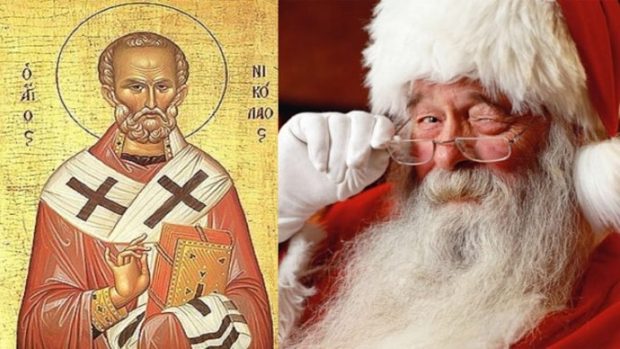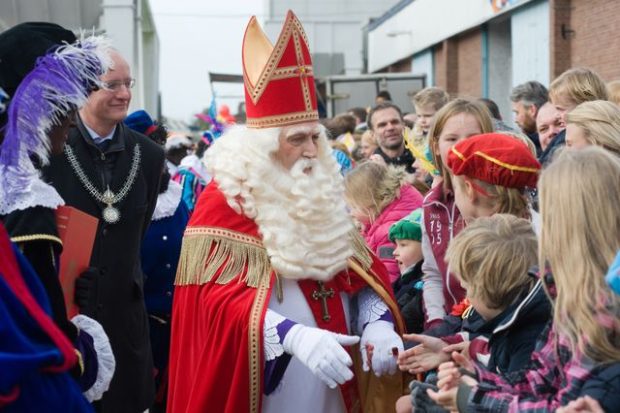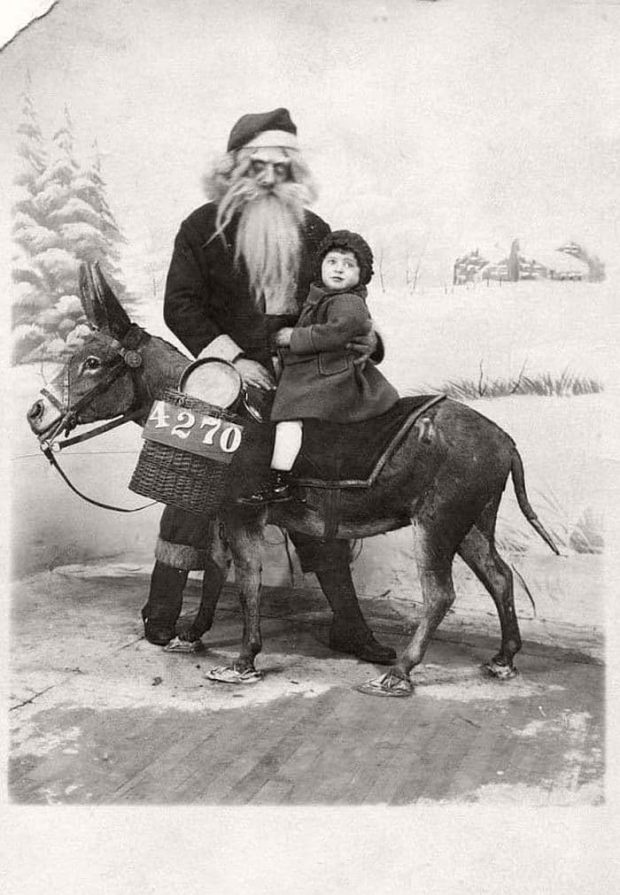Where Did The Story Of Santa Claus Come From? From Dutch Colonialism To Coca-Cola Advertising
As Christmas Approaches, There Are Many Rumors About The Story Of Santa Claus That Are Far From The Truth. In The Continuation Of This Gadget News Article, We Will Discuss The True Story And History Of Santa Claus.
The image of Santa Claus, or Father Christmas, with a long beard, a funny hat, and an all-red dress, can be seen in various media during the New Year, but few people know the real story of this character.
Among Christians and countries with predominantly Christian societies, Santa Claus is the figure who brings gifts to children during Christmas. This character has a long list, and on this list, the children receive rewards based on how well or poorly they have done throughout the year.
There is a lot of talk about Santa Claus; Some say he was a Christian saint, and others believe that Santa exists because of one of history’s most successful marketing campaigns. For some time now, there have been rumors about Santa Claus being Iranian, but the reality of Santa Claus is something else.
Saint Nicholas and Santa Claus
The origins of Santa Claus can be traced back to the 4th century AD and a Greek priest in Myra named Saint Nicholas. In books, it is mentioned that this Christian saint resurrected several boys killed by the owner of a tavern and rescued three girls from slavery. Besides this story, there is another story about this saint and the change in the lives of three girls.

The story of Saint Nicholas and the three slave girls is one of the most famous stories associated with Christian culture and is known by different names in various cultures and regions. This story is related to the life of Saint Nicholas, who later became known as Santa Claus.
You can read more about this story, but here’s the gist of it:
In a small town, an impoverished family had three daughters. This family was so poor that they could not even buy proper clothes for their daughters. Aware of the family’s problems, Saint Nicholas came to their house one night and brought three bags of gold. He secretly threw three bags of gold from the chimney of their home. In each bag was silver or gold for the marriage of one of the girls.
As a result, the daughters of this family could get married, and their financial problems were solved. As a symbol of the charity and charity of St. Nicholas, who has long been known as Santa Claus in Western countries, this story is still shared among Christian families.
This story became the foundation of present-day Santa Claus gift-giving, and families give their children gifts on Christmas Eve and declare that Santa Claus brought them these gifts.
Sinterklaas pie is also involved in the story of Santa Claus!
Before dealing with the story of Sinterklaas, it is better to know that most of the well-known characters who are somehow related to Santa Claus or are said to be the original Santa Claus, most of them have names with the same root or pronunciation as Santa Claus, and Sinterklaas is also of this rule. It is not excluded.

Like St. Nicholas, Sinterklaas is a Christian saint considered a well-known legend in the Netherlands. In Dutch legends, it is said that this saint could enter people’s houses, and no lock could prevent his presence in the homes. After entering the house, he would bring gifts for the children and leave the house. He also gave gifts to children in winter and near Christmas.
In medieval Holland, selling red dolls and gifts was widespread, and there were ceremonies where a figure similar to today’s Santa Claus was the main character. Of course, this character also has dark features, and people like Krampus, Pierre Futard, and Roclas, who existed in the legends of Sinterclaus, punished children who misbehaved!
father Christmas
The origins of the phrase Father Christmas go back to 15th century England and one of the Christmas carols. This song tells the story of a man called “Mr. Christmas.” He announced the birth of Jesus Christ to the people and still has a strong presence in the religious stories of England with the theme of Christmas.

After the 15th century and reaching the era of Theodores and Stuarts, wealthy English families did not care to use “Mr. Christmas” stories, and “Lord Miserol” became the narration of these families’ gatherings. This character is also known by other names such as “Captain Christmas” or “Prince Christmas.”
However, these characters were not similar in appearance to today’s Santa Claus, and Ben Johnson created the appearance of today’s Santa Claus in one of his plays in 1616. This person’s name was “Old Christmas,” and he was wearing a long red cloak. Also, his beard was white, and many boys and girls accompanied him.
Concepts of Father Christmas were criticized during the English Civil War, but after the Restoration, public interest in the character took off, appearing in plays, novels, and pictures. In Charles Dickens’s A Christmas Carol, 1843, Father Christmas, or the so-called “Ghost of Christmas Presents,” is an elaborate figure dressed in green.
During the English Civil War, the adventures of this character were severely criticized. Still, with time, the attention of English writers and Christians was again drawn to this character. In the famous story Christmas Carol written by Charles Dickens in 1843, Father Christmas, or as the book says, “The Ghost of Christmas Presents,” has a different appearance from Santa Claus and is known for wearing a green dress.
The Story of Kris Kringle and Christmas
Protestants were not interested in using the Dutch Sinterklaas on Christmas days and did not want a character like Saint Nicholas to become a symbol of Christmas for them. Kris Kringle is often a synonym for Father Christmas or Santa Claus in 14th to 17th-century European literature. This term is derived from the German word Christkindl, which means the Christ child.

Over time, the term has morphed into “Kris Kringle.” Father Christmas, or Kris Kringle, is a legendary figure who is said to bring gifts to children during Christmas. The character is based on the historical figure of Nicholas, a 4th-century Christian bishop known for his generosity and benevolence. Of course, this claim has been rejected by some Christian scholars. In popular culture, Kris Kringle is usually associated with the character of Santa Claus, but in reality, he was created to fight the older man in red, Krims.
Santa Claus came to power thanks to Dutch colonialism!
The traditions related to Sinterklaas have faded throughout history but have never completely disappeared. The people of Holland and the surrounding countries told his stories from generation to generation, making this story reach other parts of Europe and the world. The Dutch, colonizing different countries, took the story of Sinterklaas to the countries they went to and made his story heard more.

Their stories were utterly consistent with the story of Santa Claus or Santa Claus today. In the stories of the Dutch, he was an older man with a long beard and a red robe who flew in the air with his carriage and sent gifts to houses through the chimney.
This character was known as Santa Claus in the Dutch American colonies and was primarily mentioned in children’s stories. In 1821, an unknown poet wrote a poem about Santa Claus that described this character’s characteristics. Two years later, Clement Clarke Moore, in a poem entitled “The Visit of St. Nicholas,” dealt more with the adventures of this character.
These stories were heard increasingly, and the painter Thomas Nast, by drawing the first sketches of this character, helped make him known in other parts of the world. This is not the end of the story, and in the following, we will discuss the role of Coca-Cola in the popularity of Santa Claus.
Santa Claus becomes English.
Finally, as the stories of this character spread, his fame reached England, and he was combined with Datsun Father Christmas. Santa Claus became an important figure during the Victorian era, and wealthy English families used him to entertain their children. Father Christmas and Santa Claus were very popular and almost became a character. However, in other parts of the world, the fame of Father Christmas was declining, and Santa Claus replaced him.

Continuing and entering the 19th century, many writers used Santa Claus, and before Christmas and New Year, families living in Europe, America, and the colonies of European countries replaced him with characters such as Father Christmas, Kris Kringle, and… they did
When Coca-Cola shaped the modern Santa Claus
Over the past decades, Coca-Cola advertising has undeniably impacted the popularity of the main Christmas character, Santa Claus. These advertising campaigns have made the kind and lovable character of Santa Claus always associated with the well-known beverages created by the Coca-Cola Company.

Using a clever advertising strategy, Coca-Cola has introduced Santa Claus in different parts of the world as a symbol of happiness and community warmth; always in these advertisements, a bottle of Coca-Cola is in the hand of Father Christmas. These advertisements with charming language and a warm and positive feeling greatly impacted society, and according to some sociologists, these advertisements are one of the most important reasons for Santa Claus’s entrance into popular culture.
The influence of Coca-Cola advertising on Santa Claus’s popularity shows big companies’ strange power. These advertisements, which peaked in the thirties to the sixties, made Santa Claus more visible in cities.
Although some Iranian websites publish rumors about the non-existence of Santa Claus before Coca-Cola advertisements, the fact is that this company played an important role in making the character of Father Christmas more popular and was not the creator of Santa Claus in any way.











